When visiting Saudi Arabia, remember that non-Muslims are prohibited from entering Mecca and the Prophet's Mosque. This list gathers some of the most distinctive and noteworthy attractions in the country.If you want to travel to Saudi Arabia, you will need a Saudi Arabia visa.
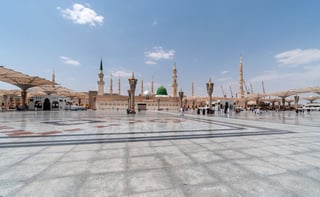
Rijal Almaa Heritage Village: A Stunning Gem in Saudi Arabia
Rijal Almaa Heritage Village, located in southwestern Saudi Arabia near Abha, is a stunning and enchanting destination that has a history spanning over 900 years. The village's centrepiece is the Rijal Almaa Museum, housed in meticulously renovated buildings showcasing remarkable architecture.
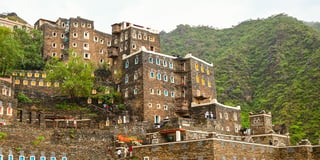
This architectural wonder, constructed from stone, clay, and wood, offers visitors a fairytale-like experience where tradition and beauty harmoniously coexist. With an affordable entrance fee of just 40 riyals (approximately 10 USD), exploring this untouched historical gem, including the museum and various old structures in the village, provides a captivating journey into the past.
Al-Balad, the Charming Heart of Old Jeddah
Al-Balad, the historic heart of Jeddah, is a captivating destination with a rich history dating back to the 7th century. This World Heritage Site is renowned for its ancient architecture, featuring buildings constructed from coral stone and adorned with intricate lattice windows that transport visitors to a bygone era.
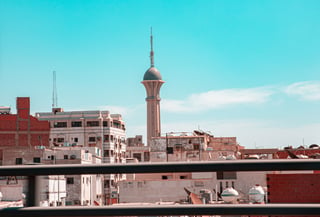
To reach Al-Balad, travellers can arrive in Jeddah by plane, car, bus, or high-speed train, and then take a local bus or use ride-sharing services like Uber for the final leg of the journey. Local advice or hotel staff guidance can be helpful in navigating the bus routes to Al-Balad.
Al Tayebat International City Museum: Unexpected Beauty and Grandeur
The Al Tayebat International City Museum in Saudi Arabia is a stunning private institution designed in the traditional Hijazi style, reminiscent of historic buildings in old Jeddah. It offers an immersive journey through the diverse regions of Saudi Arabia with faithful replicas of home interiors.
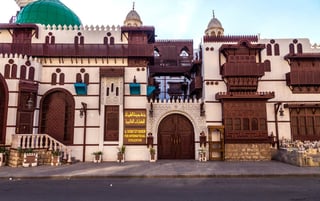
The museum houses a treasure trove of heritage, including Islamic manuscripts, weaponry, furniture, and traditional attire, providing a rich cultural experience. It operates daily (except Fridays) with admission priced at 80 Saudi riyals (approximately 21.30 USD), making it a valuable investment for travellers seeking history, art, and tradition.
Al-Rahmah Mosque: The Enchanting Floating Mosque of Jeddah
The Al-Rahmah Mosque, known as the Floating Mosque of Jeddah, is a captivating architectural wonder in Saudi Arabia. Built in 1985, it appears to float on the Red Sea's surface while its foundations are submerged.
The mosque combines modern elegance with traditional Islamic design, featuring a white structure with a turquoise dome. For the best experience, visiting during the serene moments of sunset and night when the mosque is illuminated enhances its magical floating allure.
Masjid Al-Haram: The Pinnacle of Islamic Sanctity
Masjid Al-Haram, the Great Mosque of Mecca in Saudi Arabia, is the holiest mosque in Islam, housing the revered Kaaba. Millions of Muslims gather here annually for the Hajj pilgrimage.
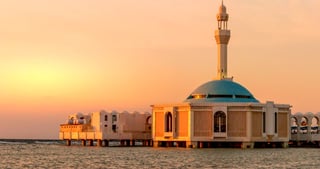
Modest attire, especially for women, is essential when visiting Mecca. Exploring traditional Saudi clothing options can enhance your cultural experience. To reach Masjid Al-Haram, consider options like the SAPTCO bus, the Haramain High-Speed Train, or traveling by car from Jeddah.
Al-Masjid An-Nabawi: The Prophet's Mosque in Medina
Al-Masjid An-Nabawi, the Prophet's Mosque in Medina, is one of the most revered and significant Islamic sites, originally constructed by Prophet Muhammad.
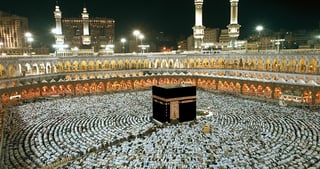
It ranks as the second holiest site in Islam and is the second-largest mosque globally. While non-Muslims are generally welcome to explore Medina, entry into the Prophet's Mosque and its courtyard is restricted to uphold its sanctity.
Quba Mosque: A Historic Gem in Madinah
The Quba Mosque in Madinah, Saudi Arabia, is of immense historical and religious significance as the world's oldest mosque and the first mosque in Islamic history, built by Prophet Muhammad in 622 CE. Although the present-day structure dates back to the 20th century, it preserves the deep-rooted heritage of the mosque.
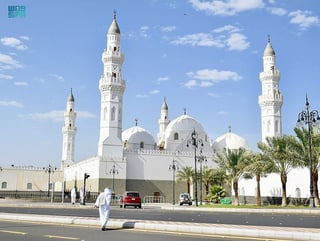
Travelers can conveniently reach the Quba Mosque by taxi, but for those who prefer a leisurely walk, a picturesque stroll along the street connecting it to the Prophet's Mosque provides a unique experience with various shops and dining options.
Mount Uhud: Majestic Beauty and Historical Significance in Madinah
Mount Uhud, located in Madinah, Saudi Arabia, is not only a majestic natural wonder with an elevation of about 1,077 metres but also holds profound religious significance.
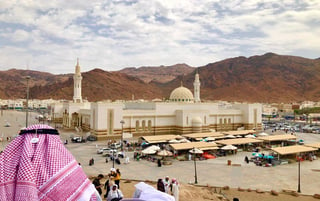
It was the site of a pivotal battle in Islamic history in 625 CE. Today, it invites pilgrims and travellers to explore its slopes, offering both scenic beauty and spiritual significance. The best time to visit is at sunset when panoramic views are most captivating. Travellers can conveniently reach Mount Uhud by using ride-sharing services like Uber for a hassle-free journey to this remarkable site.
Al Ula Heritage Village: A Glimpse into Ancient Arabia
Al Ula, located in northwestern Saudi Arabia, is a captivating destination known for its dramatic landscapes, historic tombs, and ancient structures. It holds a rich history dating back to antiquity, serving as the capital of ancient empires.
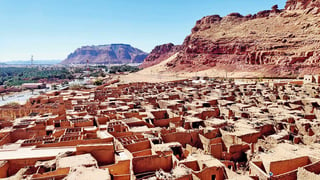
The Al Ula Heritage Village, also known as Ad-Deerah, is a prominent attraction, offering a glimpse into the region's cultural and daily life through its abandoned mud houses. Travellers can explore Al Ula by road or air, with Al Ula International Airport serving as the gateway, and guided tours are recommended to gain a deeper understanding of its history and heritage.
Elephant Rock in Al Ula: Nature's Marvel
Elephant Rock, known as Jabal Alfil, is a remarkable rock formation in Al Ula, Saudi Arabia, sculpted by natural forces over millions of years. Resembling an elephant, it's a must-see attraction in the region due to its captivating presence and unique backdrop. To reach Elephant Rock, joining a guided tour is recommended for a hassle-free journey.
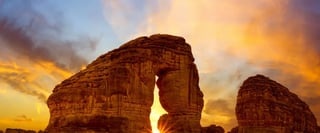
Hegra, also known as Al-Hijr, is another compelling site in northern Saudi Arabia's Al-Ula region. It's Saudi Arabia's first UNESCO World Heritage Site and holds immense historical and cultural significance. As the capital of the Nabataean Kingdom, Hegar's ruins and remnants, dating back to the 1st century AD, showcase the legacy of the Nabataeans, a once-nomadic tribe known for their mastery of trade routes in the Middle East.
Exploring the Tombs of Hegra
Hegra in Al-Ula boasts ornate tombs with exquisite facades, showcasing impressive artistry and architecture. To access Hegra, travellers can drive to the Winter Park Visitor Center, where tickets (priced at 95 Saudi riyals) can be obtained. This fee includes transportation by bus to the site and a 2-3 hour guided tour. Booking guided tours in advance is highly recommended due to high demand in Al-Ula, with various tour options available to cater to different preferences.
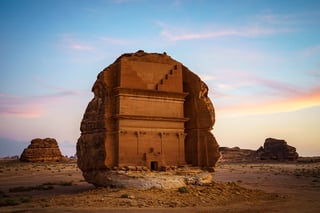
Wadi Al Disah in Tabuk Region: The Valley of Palm Trees
Wadi Al Disah, known as "The Valley of Palm Trees," is a geological marvel in Saudi Arabia's Tabuk region, part of the Prince Mohammed bin Salman Natural Reserve. It features towering sandstone cliffs and offers activities such as hiking, picnicking, and camping amidst its rugged beauty.
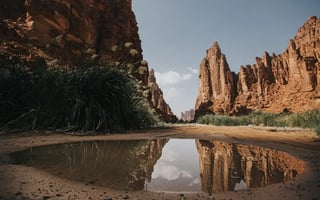
To reach Wadi Al Disah, it's advisable to use a 4x4 vehicle, and travellers should prepare with ample water, snacks, and offline maps, as facilities are limited in the valley. Tabuk is a convenient stopover for supplies and is approximately 220 kilometres from Al Disah, with Al Ula about 300 kilometres away.
Edge of the World in Riyadh: A Natural Wonder
Edge of the World, near Riyadh, Saudi Arabia, is a stunning natural destination known for its majestic cliff within the Tuwaiq Mountain range.
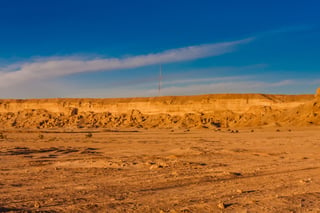
Located about 100 kilometres from Riyadh, it offers picturesque mountain vistas and thrilling hiking opportunities. Travellers can reach it by driving independently with a 4x4 vehicle and offline maps or opt for guided tours that provide transportation and a guided hike, often culminating in a sunset viewing and a visit to bat caves for a hassle-free experience.
Ushaiger Heritage Village in Riyadh: A Glimpse into Tradition
Ushaiger Heritage Village, located 200 kilometres northwest of Riyadh, offers a glimpse into traditional Saudi Arabian village life with its well-preserved yellow mud houses dating back over 1,500 years.
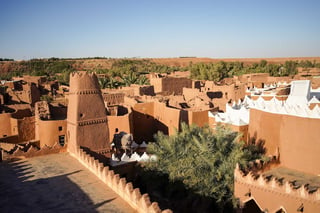
Visitors can explore heritage museums, houses, and mosques, immersing themselves in Saudi Arabia's cultural and historical roots. Beyond the village, the surrounding area boasts abandoned houses, ancient farmlands, palm groves, and date plantations that showcase the region's rich agricultural and cultural heritage. To reach Ushaiger Heritage Village, travellers can journey to Riyadh and rent a car for easy access to this historical gem.
Al Diriyah Heritage Village in Riyadh: A Glimpse into Saudi Arabia's History
Located just 20 kilometres from Riyadh, the Al Diriyah Heritage Village offers visitors a captivating glimpse into Saudi Arabia's history and cultural heritage. The village boasts centuries-old mud-brick architecture, serving as a testament to the nation's architectural legacy.
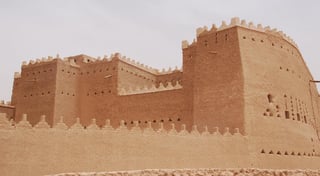
Diriyah is also historically significant as the birthplace of the first Saudi State, with the At-Turaif District, a UNESCO World Heritage Site, and the Salwa Palace, the original home of the Al-Saud royal family, as standout attractions. To reach Diriyah, travellers can journey to Riyadh, the Saudi capital, by various means, and then easily access this historical gem by renting a car or using an Uber ride.
Dhee Ayn Marble Village in Al Baha: A Hidden Gem
Nestled in the Sarawat Mountain range of the Al Baha region, the Dhee Ayn Marble Village, also known as Dhee Ayn, is a hidden treasure known for its unique multi-storied stone houses and local markets.
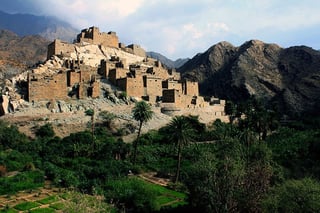
What distinguishes Dhee Ayn is not only its captivating architecture but also its lush surroundings, with verdant banana plantations, palm trees, and a natural spring, creating a tranquil oasis in the mountains. Travellers typically reach Dhee Ayn via a scenic drive from Al Baha, covering about 30 kilometres, before embarking on a leisurely exploration of the village, which welcomes visitors from 7 am to 7 pm daily.
FAQS
How can I get to these beautiful places in Saudi Arabia?
The means of transportation can vary depending on your location and the destination. Generally, you can reach these places by plane, car, bus, or train. Once you are in Saudi Arabia, you can rent a car, use rideshare services like Uber, or join guided tours to access these beautiful sites.
Are there any entry fees to visit these places?
Yes, some of these places may have entry fees. The fees can vary, so it's advisable to check the specific costs for each destination before your visit. Prices may also vary for tourists compared to local residents.
What should I wear when visiting religious sites in Saudi Arabia?
When visiting religious sites like mosques and holy places, it's essential to dress modestly and respectfully. Men typically wear traditional or Western clothing, while women should wear long, loose-fitting clothing and cover their hair with a headscarf (hijab) and a cap. It's also a good idea to carry a loose scarf to cover your head when entering religious buildings.
Can non-Muslims visit religious sites in Saudi Arabia?
While non-Muslims are generally not permitted to enter religious sites such as mosques, some exceptions may apply. For example, non-Muslims are typically allowed to visit the outside areas of the Grand Mosque in Mecca but are restricted from entering the inner sanctum. Always check the specific rules and guidelines for each religious site you plan to visit.
How can I plan my trip to Saudi Arabia in 2023?
Planning a trip to Saudi Arabia involves obtaining a visa, booking flights and accommodations, researching attractions, and staying updated on travel advisories, visa requirements, and COVID-19 restrictions. Guided tours can be helpful for a more organised experience, especially for those unfamiliar with local customs and language.
What is the best time to visit Saudi Arabia?
The best time to visit Saudi Arabia varies by region and preference. Winter months (November to February) are popular for milder temperatures, but some areas like Abha are great in summer due to cooler climates. Research specific destinations for accurate weather information.
To obtain a Saudi Arabia
- Step1: Complete the online application by providing your passport details.
- Step2: Submit payment online using a credit card.
- Step3: Monitor your email for confirmation of payment and receipt of your eVisa, which will be sent electronically.
Recent News
- Saudi Tourism Authority and Trip.com Group sign global agreement to significantly boost tourism numbers
- WTTC celebrates Saudi Arabia milestone surpassing 100 million tourists
- 2024 Ramadan Celebration in Saudi Arabia
- Saudi Arabia Unveils Expo 2030 Visa Initiative
- 5 NEW Visas to Work & Live in Saudi Arabia! (Expats Guide)
- Saudi Arabia's Innovative Residency Programs for Foreign Talent and Investment
- Saudi Arabia Investor Visa Open to All Nations
- Turkey Visa for Saudi Arabia
- Saudi Arabia Expands eVisa Program to 6 Additional Nations
- Verify Your Saudi Visa Application Status
